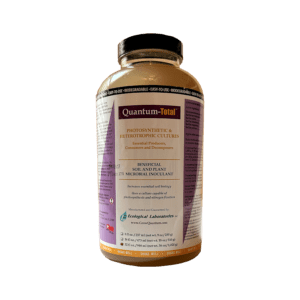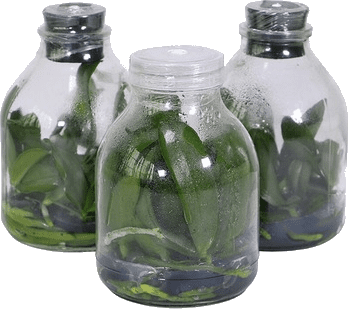You may be familiar with probiotics for your own consumption. The microbes reinforce those that naturally live in our digestive systems and help extract nutrients from our food. Since they don’t have digestive systems, per se, you may wonder “what do plant probiotics do?” The answer is “several things”.
Each microbe variety has it’s own “niche”. Some attack pathogens, some secrete antibiotics that prevent infection, and others secrete hormones that are plant growth stimulants. In addition to some of those capabilities, some of the strains in Quantum-Total, for example, are nitrogen-fixing, so create plant food from air, right inside the plant. Another one is photosynthetic, so supplements the plant’s own production of the sugars that fuel growth. Inocucor Garden Solution also contains a fungus that extends its hyphae into the growing medium, where it collects nutrients and water that can be delivered directly into the plant, in effect, “expanding” the root system. To get the most “bang for the buck”, plant probiotic products that are made up of multiple consortia of microbes have the broadest effect on the plants.

Let me now tell you a few ways I have utilized plant probiotics:
► Orchids removed from flasks, having been in a sealed, sterile environment for their entire lives, are vulnerable to pathogens and cultural stresses. Plant probiotics, when applied immediately, provide a degree of protection and stimulates active growth. The net result is a significant reduction in losses.

► I treat my collection routinely to keep fungal and bacterial infections at bay. Such pathogens are ubiquitous, and despite all my efforts to avoid setting my plants up for infections, they still happen. By maintaining a regular routine of plant probiotic treatment, the incidence of rots – especially now since I grow outdoors on my deck – is virtually zero.
► We used to plant New Guinea impatiens plants in the spring in our flower beds in Pennsylvania. Like clockwork, they would succumb to mildew, die back a bit, then slowly recover as the weather warmed. One year I decided to experiment, so after planting, I did a single treatment, wetting the entire plant and soaking the soil. We had absolutely no sign of any rots that year, and the plants became huge in no time. Needless to say, that is now my standard routine.

► I have also used plant probiotics to rescue plants. I purchased an expensive phalaenopsis clone that started to succumb to erwinia. Knowing how rapidly that can kill a plant and figuring I had nothing to lose, I immersed the plant overnight in a probiotic solution. The next day I took it out of the bath and repotted it. The infection was stopped cold, and I still have that plant today.
► I had a large maple tree in Pennsylvania that apparently contracted a fungal root rot (indicated by a large array of mushrooms) and died. About a year later I noticed the beginnings of a similar problem with a 50′ tall American ash tree. By early June, it had lost all of its leaves. I mixed up a five-gallon bucket of probiotic solutions and poured it all around the root system. I saw no improvement and concluded it was dead, but the following spring, it leafed out normally.
► Here in North Carolina, we have a nice, red Japanese maple in our yard.

In these parts, the plants are particularly susceptible to a fungus that causes the leaves to curl, turn brown and fall off. My wife noticed that happening our first summer here, so I filled my hose-end sprayer with probiotics and doused the plant and the surrounding soil. The infection did not progress, and with a single, springtime spraying that year, we have not seen any return of the problem.
Some tips:
- Use plant probiotics regularly throughout the year.
- Add it to your fertilizer solution, or better yet, apply fertilizer, Kelpak and the probiotic together.
- If you see evidence of an infection coming on, double the dose and treat the plant several days in a row.
- It is best to mix with pure water, but if your water is chlorinated, double the dose and use it immediately after mixing.
- Use the product on more than just orchids – tropical house plants, fruits and vegetables, bedding plants, shrubs and lawns will all thank you for it.